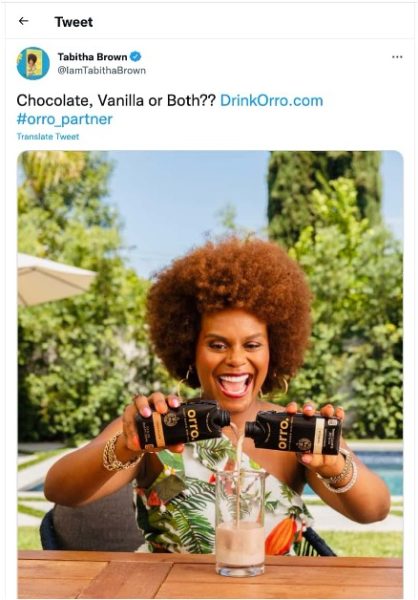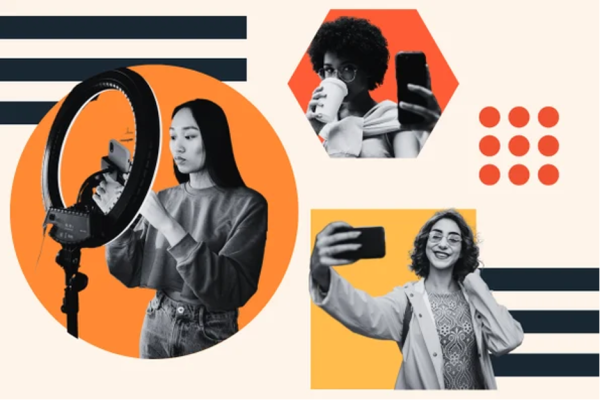Our PR Director, Michelle Smytheman, is passionate about helping emerging professionals in the communications industry and teaches at the University of the Sunshine Coast. As part of an assessment task this year, there have been some excellent blogs written by first-year students about emerging business trends. We are proud to share their work.
You may have noticed that there has been a sharp increase in the number of content creators and influencers recently. There are currently more than 45 million professional content creators as well as over 162 million amateur creators in 2024. But this surely cannot happen by coincidence so why has content creation become so big? Due to technological advancements, posting online has become a lot easier. 60.42% of the world owns at least one smartphone.
Furthermore, with the presence of COVID-19, a multitude of people’s jobs were affected which in turn affected their income. This turned citizens to ‘side hustles’, especially online, which is an additional form of employment outside an individual’s full-time job to earn some extra money. Unlike a part-time job, side hustles provide more freedom and usually involve following your passion or using certain talents. As you may have guessed, content creation itself is a side hustle but how exactly does one generate money from creating content? With the steep rise of content creators, companies have begun to shift towards using motives through content creators to influence consumers’ buyer behaviour.
With the presence of lockdowns, social media has become the primary source of entertainment for many as it provides a tool to foster connections and offers a plethora of content. Apps such as TikTok blew up with currently a billion users roughly. Having so many people looking for content and ways to connect online, a clear demand for content creation is on the rise. The best part is how easy it is to start creating content. The possibilities for content creation are endless and you aren’t limited in what you can make. The content can be based on anything whether that be your passion, talents or even just your day-to-day life. However, content creation isn’t perfect and like most jobs, it has its drawbacks. Let’s dive into vlogging on YouTube as an example. While this allows for flexibility and an option for creators to express themselves with the ability to profit from a passion it does come with potential drawbacks. Getting started is quite difficult as you do not get paid instantly to get started you may need to purchase a bit of equipment. Saphier Lanier suggests that to become a successful vlogger, you should at least have a quality camera, decent editing software and a tripod or stabiliser. Furthermore, it can become very time-consuming and you may have to deal with negative feedback. Nonetheless, statistics suggest that the current estimated value of the influencer industry is $17.4 billion and is expected to grow to $22.2 billion by 2025. With such a booming economy and high demand for content creators, businesses have started to take advantage of this by collaborating or even creating partnerships with content creators to advertise their products.
 Snovio states that buyer behaviour refers to certain decisions people make to purchase products and services. Consumer motivation drives people to buy products or services that fulfil conscious and unconscious needs or wants. The main motive is FOMO which stands for ‘fear of missing out’. Content creators have a large following and build a community of people with similar interests who look up to the creator. Wanting to be like the creator is one motive. Another motive is emotional persuasion. According to Leah Summan a digital marketing executive, Supporting someone ignites an emotional response. As humans, we like to help others as it makes us feel good about ourselves. Hence, content creators can evoke emotions that would influence a consumer’s decision to purchase. Finally, influencers are normally seen to specialise in certain areas. Thus, the viewers tend to look to creators for information in that area; this is referred to as informational needs and influences viewers to make informed decisions.
Snovio states that buyer behaviour refers to certain decisions people make to purchase products and services. Consumer motivation drives people to buy products or services that fulfil conscious and unconscious needs or wants. The main motive is FOMO which stands for ‘fear of missing out’. Content creators have a large following and build a community of people with similar interests who look up to the creator. Wanting to be like the creator is one motive. Another motive is emotional persuasion. According to Leah Summan a digital marketing executive, Supporting someone ignites an emotional response. As humans, we like to help others as it makes us feel good about ourselves. Hence, content creators can evoke emotions that would influence a consumer’s decision to purchase. Finally, influencers are normally seen to specialise in certain areas. Thus, the viewers tend to look to creators for information in that area; this is referred to as informational needs and influences viewers to make informed decisions.
Understanding these consumer motives is essential for businesses when crafting their marketing strategies. Forbes explains that the beauty hashtag on Instagram with over 490 million entries. Knowing this, make-up companies can collaborate with beauty influencers to promote a limited item that is directly connected to the influencer. This creates an atmosphere for consumers to purchase impulsively to connect with something ‘trendy’ and relevant to the content creator. An example of this is when Jaclyn Hill who is a Youtuber with 4.5 million subscribers collaborated with Morphe Cosmetics on a palette including eyeshadows and lip colours. The video that debuted the product received over 2 million views within the first month and sold out within minutes of restocking multiple times. A good way to use emotional motivation would be through storytelling. Using a content creator’s traumatic past for a mental health business is a great way in which the business can evoke empathy between someone they have built a connection with online. When considering how to use informational needs effectively, Refersion suggests that trust is one of the most valuable characteristics of the dietary supplement niche for successful marketing. Gym influencers are another large portion of the content creation community and can promote dietary supplements and describe their personal experiences with the promoted product as well as use their content to enhance the need for it. In fact, these strategies are so successful that an Influencer Marketing Hub (IMH) report found that 82% of surveyed marketers plan on dedicating a budget to influencer marketing.
It is undeniable that with the rise of active users on social media the demand for content creators is also increasing. Businesses have taken advantage of this situation by using content creators as a bridge to their consumers by highlighting the motives that drive the consumer’s buyer behaviour. Understanding the demand for content creators, what makes them successful and how businesses collaborate to benefit both sides financially, you too can make content creation your next side hustle.





